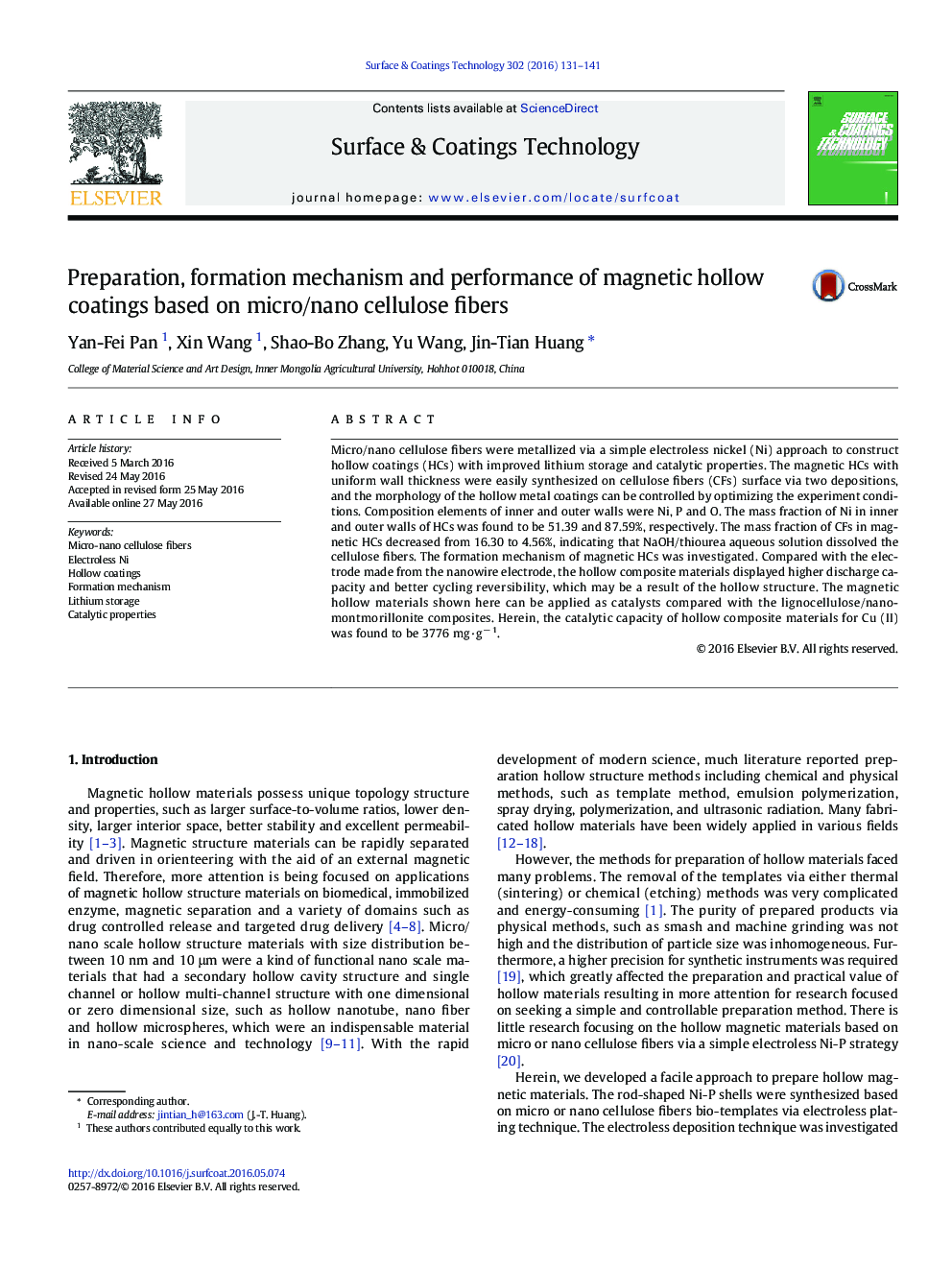| Article ID | Journal | Published Year | Pages | File Type |
|---|---|---|---|---|
| 8025192 | Surface and Coatings Technology | 2016 | 11 Pages |
Abstract
Micro/nano cellulose fibers were metallized via a simple electroless nickel (Ni) approach to construct hollow coatings (HCs) with improved lithium storage and catalytic properties. The magnetic HCs with uniform wall thickness were easily synthesized on cellulose fibers (CFs) surface via two depositions, and the morphology of the hollow metal coatings can be controlled by optimizing the experiment conditions. Composition elements of inner and outer walls were Ni, P and O. The mass fraction of Ni in inner and outer walls of HCs was found to be 51.39 and 87.59%, respectively. The mass fraction of CFs in magnetic HCs decreased from 16.30 to 4.56%, indicating that NaOH/thiourea aqueous solution dissolved the cellulose fibers. The formation mechanism of magnetic HCs was investigated. Compared with the electrode made from the nanowire electrode, the hollow composite materials displayed higher discharge capacity and better cycling reversibility, which may be a result of the hollow structure. The magnetic hollow materials shown here can be applied as catalysts compared with the lignocellulose/nano-montmorillonite composites. Herein, the catalytic capacity of hollow composite materials for Cu (II) was found to be 3776 mg·gâ 1.
Related Topics
Physical Sciences and Engineering
Materials Science
Nanotechnology
Authors
Yan-Fei Pan, Xin Wang, Shao-Bo Zhang, Yu Wang, Jin-Tian Huang,
